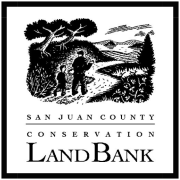Crescent Beach Forest Thinning: A Forest Health and Fire Resiliency Project
The Land Bank has completed forest health assessments at many of its preserves to help prioritize its stewardship efforts in the face of a changing climate. The Crescent Beach Forest Thinning Project was identified in a 2022 by Rainshadow Consulting, and it is described in the 2024 Crescent Beach Stewardship and Management Plan. Both documents are available by request.
In broad terms, the project is designed to improve the forest’s health and resiliency to wildfire. We intend to meet these objectives by removing small diameter conifers within a 60-acre work area and by establishing a shaded fuel break along the existing trail.
In 2024, the Land Bank applied for and received up to $240,000 in federal grant funds through the State’s Division of Forest Resiliency, a relatively new branch of the Department of Natural Resources (DNR). We are working closely with DNR staff on the planning. They are currently delineating project boundaries and marking sample areas, and they will lead a competitive bidding process to select a contractor. We anticipate thinning work will begin in July 2025. Once the project does start you can expect to hear some machine and chainsaw noise during work hours. Depending on the area of work, we may also implement temporary trail closures to ensure efficient operations and public safety.
Prior to initiation, we will install informational signage at the Preserve’s north and south trailheads. This project will be managed by Peter Guillozet (Orcas Preserve Steward) and Erin Halcomb (Stewardship Coordinator). Please free to contact Peter at 360-298-0052 or peterg@sjclandbank.org or Erin at 360-910-2584 or erinh@sjclandbank.org for additional information.
Key findings in 2022 Forest Assessment
o High tree density
o Declining tree vigor and health
o High tree mortality
o Increasing susceptibility to drought, insect damage, and disease
o Extensive ladder fuels
o Increasing fire risk
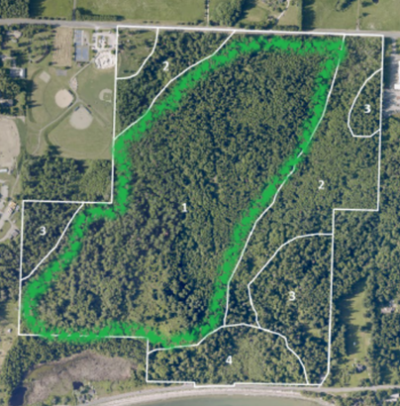 Focal area: Mixed Hardwood/Conifer Forest
Focal area: Mixed Hardwood/Conifer Forest
o Largest stand type (70.7 acres)
o Primarily Douglas fir, grand fir and alder
o Variable understory
o Heavily logged in the late 80s and early 90s
o Relatively young
General recommendations
o Remove small-diameter (<10”DBH) trees
o Create a shaded fuel break along trail to reduce fire intensity and rate of spread and provide safe access for suppression
Proposed approach and methods
o Retain hardwoods and older trees
o Snag retention/creation and downed wood
o Variable skip/gap thinning
o Hand felling in sensitive and difficult to access areas
o Mechanized equipment in easily accessible areas
o Biomass management: hand piles, chipping, biochar
Other project planning considerations:
o Outreach to Tribes and SJC residents (ongoing)
o Site-wide cultural resources assessment (completed)
o Attempt to minimize disruption to preserve users
o Temporary closures as necessary
o Pre- and post-project tours
o Minimize soil disturbance
o Avoid primary nesting season
o Extensive understory planting (post project)
o Weed management (ongoing)
o Trail restoration (post project)
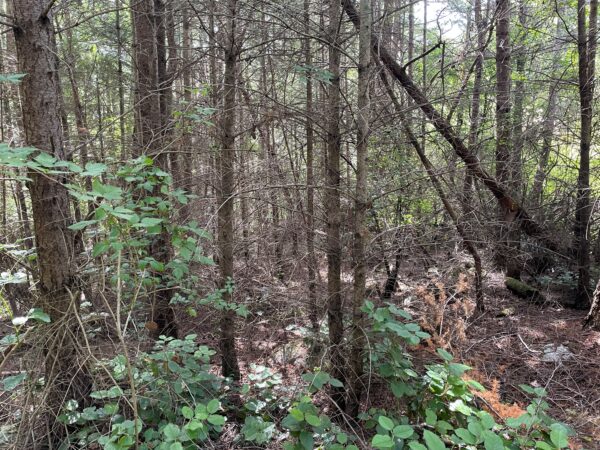
Fuels treatments will target high-density stands like this one of 30-year-old grand fir in poor health.

Modest thinning of small-diameter trees in the background is proposed to mirror tree spacing in foreground.
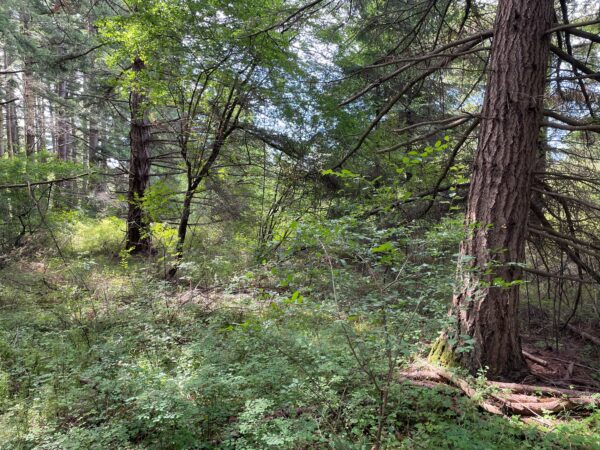
This mixed age stand with low fuel loading is a model for post-treatment areas; no work is proposed here.
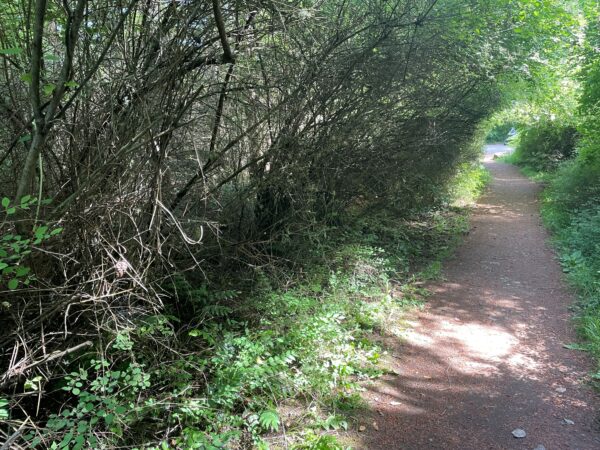
The shaded fuel break will focus on cutting back trailside vegetation, as seen above, and improving safe access in the event of an emergency.
